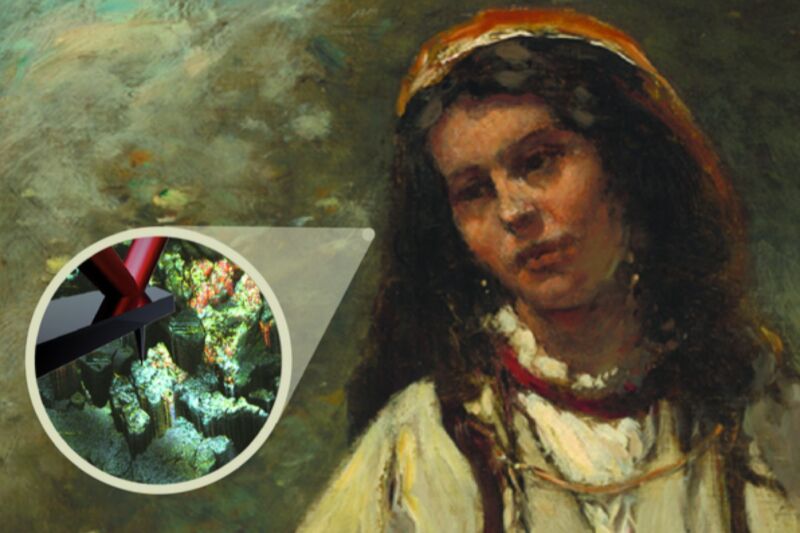
Enlarge / NIST researchers collaborated with the National Gallery of Art and other organizations to study "metal soaps" found in oil paintings. The soaps can cause the painting to degrade over time. (credit: National Gallery of Art/A. Centrone/NIST)
Scientists at the National Institute of Standards and Technology collaborated with the National Gallery of Art and other institutions to study the deterioration of an oil painting, entitled Gypsy Woman with Mandolin (circa 1870), by the 19th-century French landscape and portrait painter Jean-Baptiste-Camille Corot. The researchers used three complementary techniques to analyze paint samples under infrared light to determine the composition of the damaging metal carboxylate soaps that had formed on the top layer of paint, according to a recent paper published in the journal Analytical Chemistry.
“The painting had some problems that art conservators pointed out,” said co-author and NIST researcher Andrea Centrone. “It has 13 layers, many due to restorations that occurred long after the painting was made, and at the very least, the top layer was degrading. They wanted to restore the painting to its original state of appearance and find out what was happening on a microscopic level on the top layer of the painting, and that’s where we started to help.”
Back in 2019, we reported on how many of the oil paintings at the Georgia O'Keeffe Museum in Santa Fe, New Mexico, had been developing tiny, pin-sized blisters, almost like acne, for decades. Conservationists and scholars initially assumed the blemishes were grains of sand trapped in the paint. But then the protrusions grew, spread, and started flaking off, leading to mounting concern. Some paintings have more pronounced protrusions than others, but even when the conservators restored the most damaged canvases, the pimpling (or "art acne") returned.
No comments:
Post a Comment